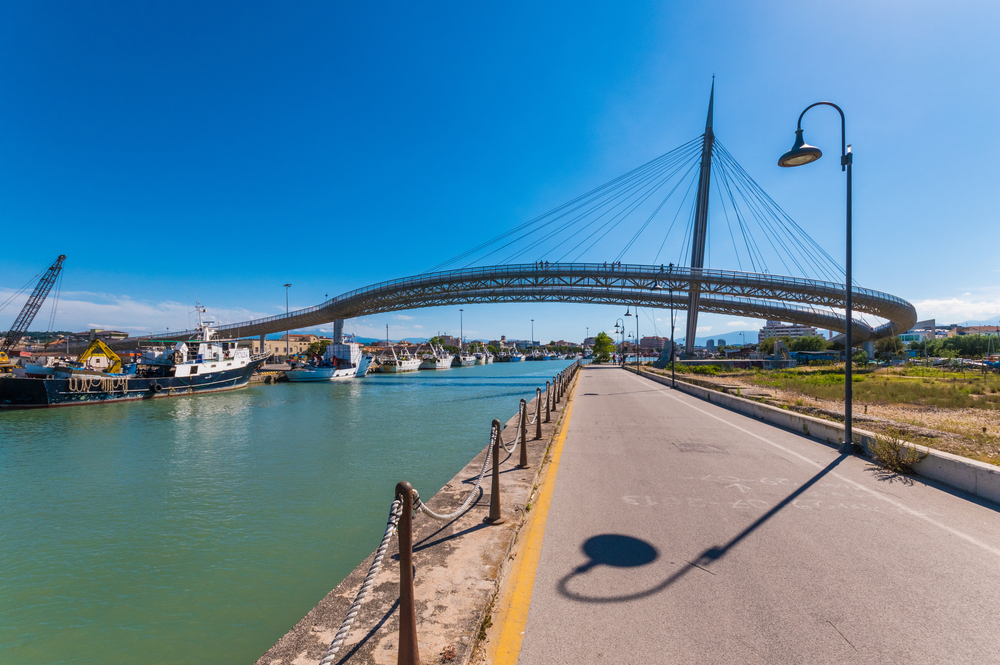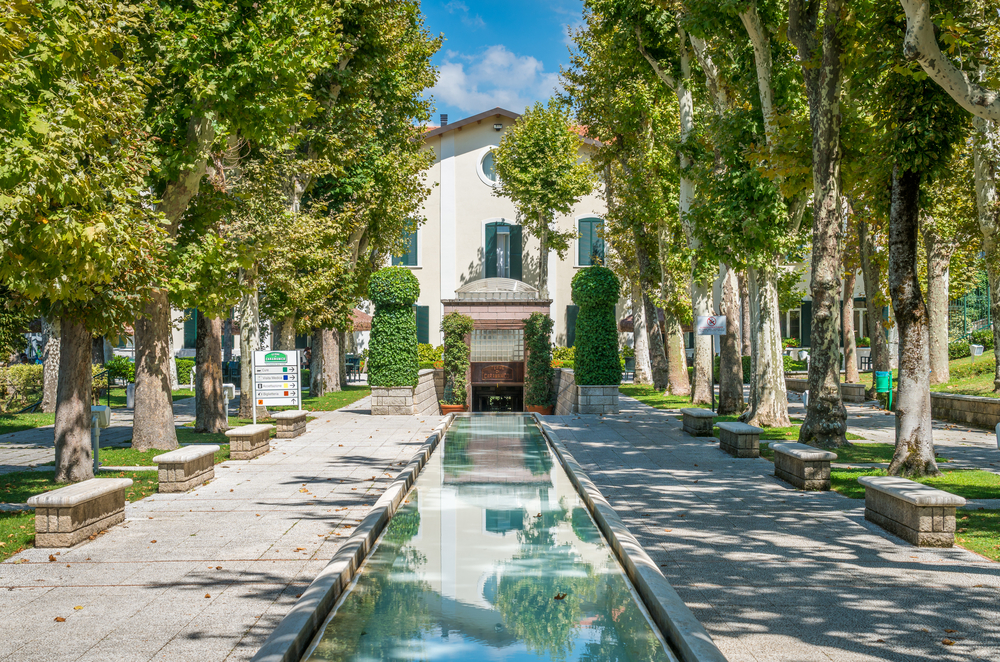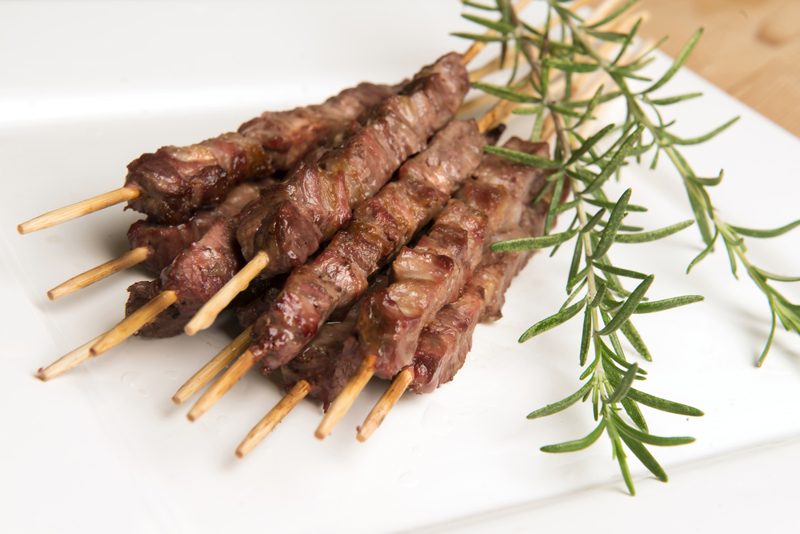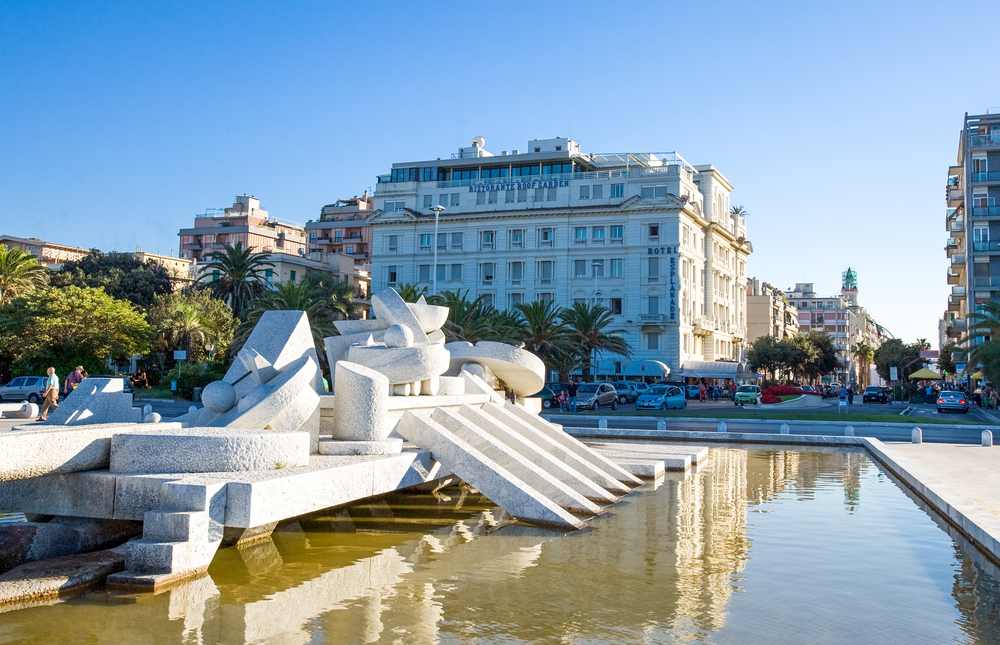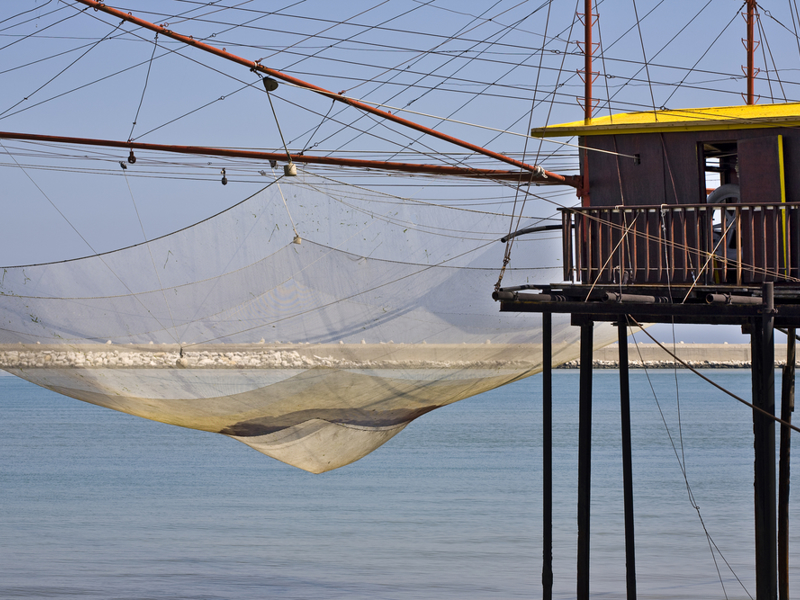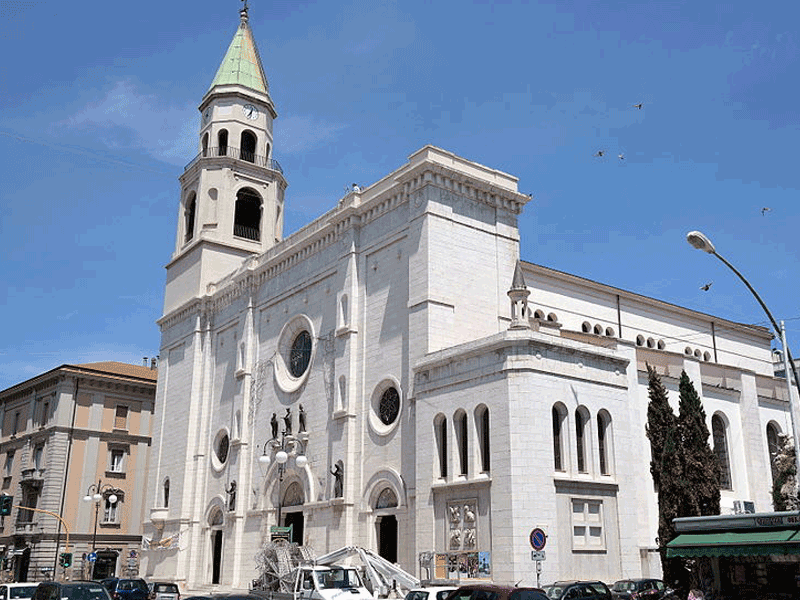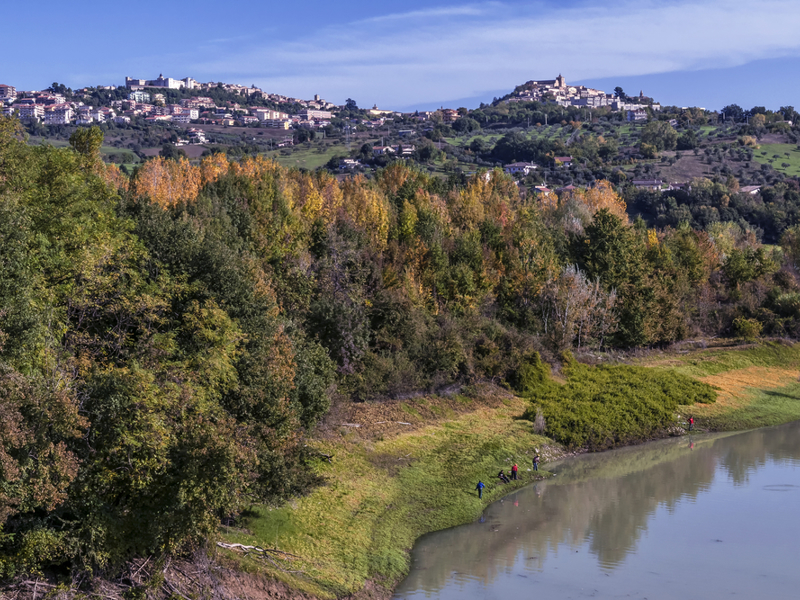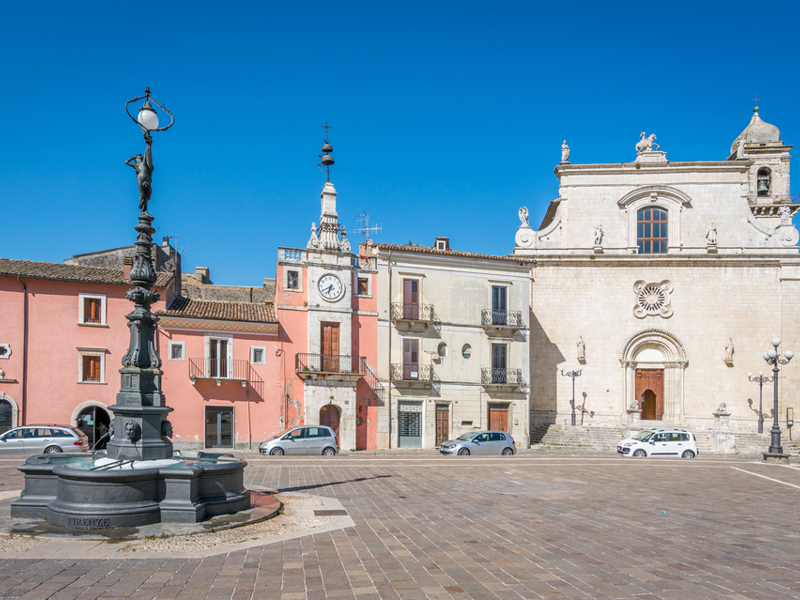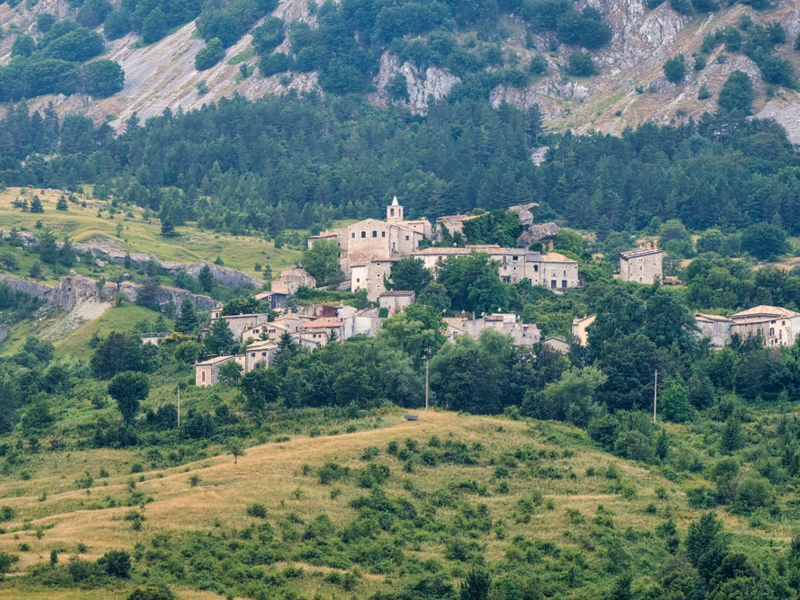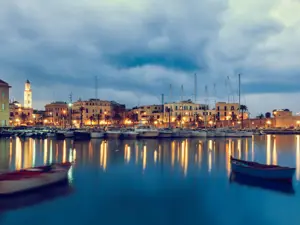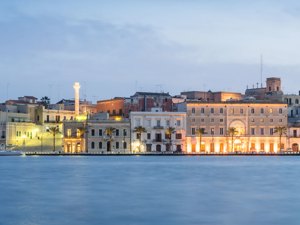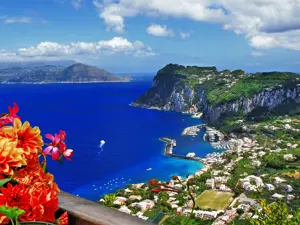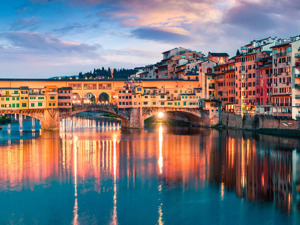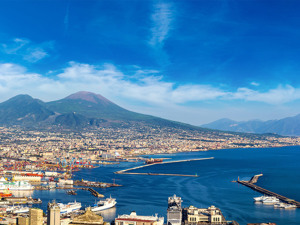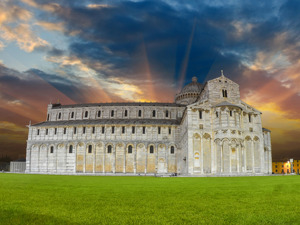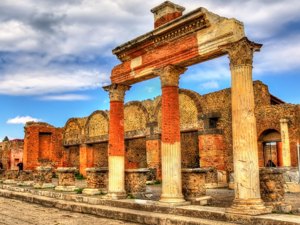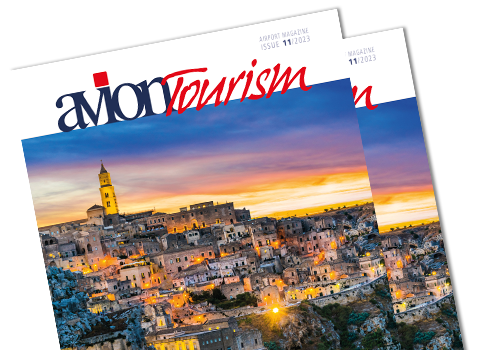Pescara is a bright, modern city, which is situated at the mouth of the river of the same, on the Adriatic Sea in Abruzzo, but less than an hour away from the highest peaks of the Apennine Mountains.
The city has been an exclusive tourism destination since the early twentieth century, as testified by period photos and the city’s elegant
Art Nouveau villas, which are still carefully maintained. A stroll along the sea front lives up to all expectations: from the beautiful views and the scent of the trees and plants, including the cheerful palms, to the night clubs that energise the tourist scene on summer nights. But there are also picturesque open-air restaurants and a cycle path for taking in the healthy sea air. During the summer there are daily connections with
Croatian islands (
Havar and
Split), as well as the
Tremiti islands.
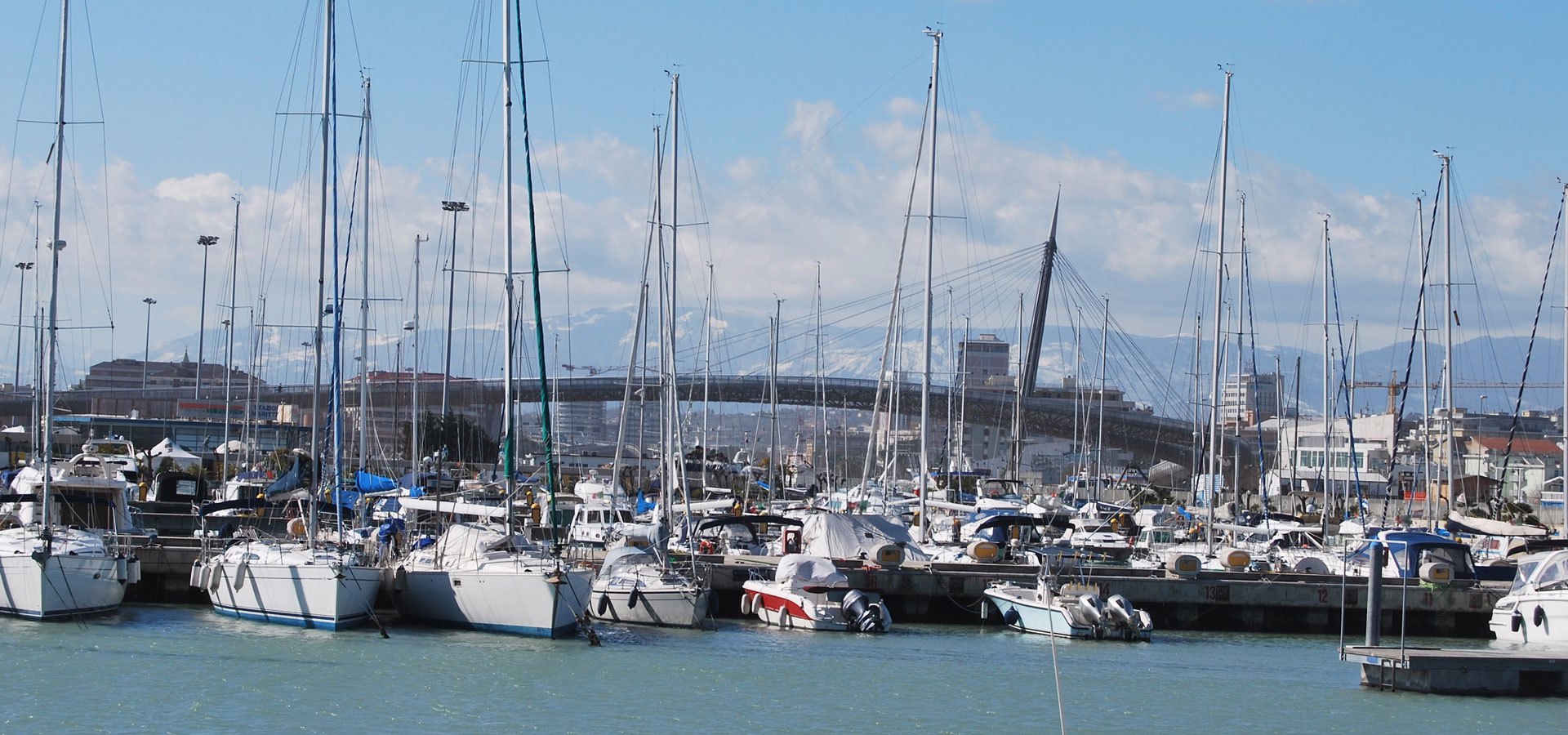
The “Marina di Pescara” Port is not only one of the most active, but also one of the largest and best-equipped ports on the Adriatic Sea. Since 1990 it holds the coveted European Blue Flag award. Here assistance is guaranteed 24 hours a day, and inside it offers everything a tourist may ask and wish for: an elegant and well stocked shopping centre, restaurants serving local dishes, a sailing club, sail & fun trips, bike and car hire and, lastly, the opportunity to book week-long cruises.
The port is also a starting point for educational and healthy excursions to local nature parks, wildlife areas, spas and even ski resorts.
Pescara also has splendid forests of Aleppo pines with their unique umbrella shape, which distinguish the coastline. There are also some well-known Nature Reserves, such as the state reserve, which has a trim trail and the Avalos pine forest with its pretty lake with swans, and the Regional Nature Reserve: all green oases that inspired the work of the poet Gabriele D’Annunzio, who came from Pescara.
Avalos Park
The pine forest of D’Annunzio is found in the southern area of the city, and is known as the Pineta d’Avalos or Parco d’Avalos after the name of the family who held the marquisate of Pescara at the time of the Bourbons. The historical and spectacular former Aurum building, an auditorium and the Gabriele D’Annunzio Theatre, which holds many popular concerts and theatre performances, are also found in the reserve. The Aurum was built in 1910 as a “kursaal” (spa) with a circular layout, but the project remained unfinished until the 1920s when the Pomilio family transformed it into the Aurum distillery - a name created by D’Annunzio because it manufactured a liqueur made of oranges (Latin: aurantium). The State Forestry Corps is located inside the Santa Filomena Pine Forest, to the north of the city, which manages the Bird of Prey and Wild Animal Rescue Centre. The centre has some 500 examples of birds of prey alone.
Thermal Spa
Pescara is not just a place of nature reserves or golden beaches that extend to Montesilvano and Città Sant’Angelo Marino, it is also an oasis of well-being and ‘remise en forme’ at the nearby Thermal Spa Centres of Caramanico and Popoli, which offer pampering, beauty and health treatments.
The local cusine
The local cuisine offers an exceptional variety of tasty dishes, true delights that range from fish soup, raw fish salad, stuffed squid, linguine pasta with corn on the cob sauce or roast monkfish to seafood specialities served alongside dishes of the “land” such as maccheroni alla chitarra (pasta made with a device known as a chitarra or guitar), roast mutton accompanied by slices of fried bread, sagne e fagioli (pasta and beans), ciffe e ciaffe di maiale (fried pork with chilli and garlic), to finish with the local sweet of celebrations: parrozzo, a mixture of chocolate and almonds.
This is an area waiting to be discovered in all its different aspects - from sport and wellness to delicious flavours, and ending with a glass of excellent wine such as Trebbiano or Montepulciano d’Abruzzo.
Text by Anna Glik
Video: www.abruzzoturismo.it
Copyright © Sisterscom.com
Tourism Board
www.turismo.provincia.pescara.it
www.abruzzoturismo.it
Partnership with Booking.com
Where to sleep in Pescara
Pescara is a welcoming city and offers different possibilities for accommodation.
To find the ideal hotel and the best offers you can do a search for the stars but also for districts or landmarks.
STARS
Hotels for stars, differentiated by type of services:
DISTRICTS
Hotels in the districts
LANDMARKS
Hotels in tourist area
AIRPORT
Hotels near airport

